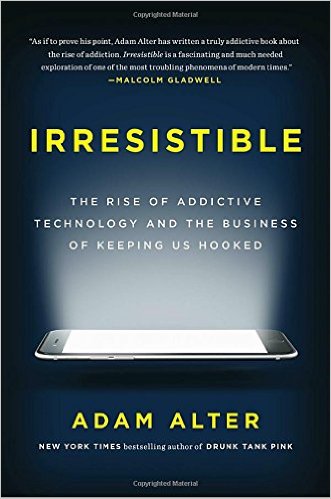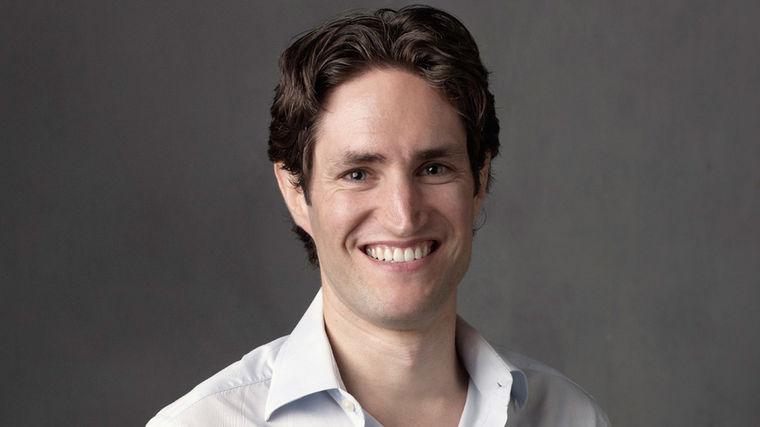Social psychologist Adam Alter on outsmarting tech manipulation, increasing your customer engagement, and the not-so-sudden rise of millennial pink
Adam Alter has been on our radar since discovering his compelling book Drunk Tank Pink: And Other Unexpected Forces That Shape How We Think, Feel, and Behave. In essence, it’s about about how our environment shapes our thoughts and actions in subtle ways, therefore affecting our decision-making process. His latest book, Irresistible: The Rise of Addictive Technology and the Business of Keeping Us Hooked, is a fascinating study of an issue that, sadly, none of us can deny: tech is running our lives, and taking away from our personal time. Aside from his prolific work as an author, Alter is an Associate Professor of Marketing and Psychology at New York University’s Stern School of Business and was most recently voted one of the “40 Most Outstanding Business School Professors under 40 in the World.” We couldn't wait to grill him on tech addiction as it relates to marketing, his prescient use of millennial pink on his first book cover, and whether he thinks Intellects was a good name choice for our website.
“The worst-case scenario, as I imagine it, is that we’ll spend almost all of our free time in some mixture of virtual worlds.”
1.
We know from reading Irresistible that there are significant addiction issues in the current relationship between people and their tech devices. Tech is a conundrum for marketers: not only do we need to stay engaged with it, social channels have become the most important vehicle for marketing. How do we use it as a channel for marketing without feeling like we’re contributing to addictive behavior?
ADAM ALTER: One piece of advice I like—and this applies to any profession—is to adopt a sort of Hippocratic Oath. Medical practitioners are taught to do no harm, above all else, and that should be the rule that guides marketers and tech developers. The nature of modern tech means that tech developers and marketers have the power to reach huge audiences, which is why their adoption or neglect of something like the Hippocratic Oath makes a huge difference to well-being on a massive scale—sometimes amounting to billions of people.
2.
OK, so we know we are being manipulated by the screens, and the dawn of Virtual Reality is upon us. How do you see the impact of VR augmenting this manipulation? Any early predictions?
AA: Yes. If you speak to VR and AR experts, many of them will tell you that we’ll all own personal VR headsets within a few years. We’re struggling to live our lives in the presence of smartphones, so given the promise of VR and AR—how immersive they are, their ability to deliver “perfect” worlds—I worry about how profoundly they’ll change our lives. Consumer behavior experts are already working on VR experience design, and since they (or we) know a huge amount about what makes people tick, what engages them, and why they return to certain experiences over and over again, I worry that we’ll struggle to spend much of our free time in the real world. The worst-case scenario, as I imagine it, is that we’ll spend almost all of our free time in some mixture of virtual worlds.
3.
Your area of expertise as a Psychologist is decision making. Have you uncovered anything new that would pertain to the world of marketing, specifically the customer journey?
AA: Marketers spend a lot of time trying to engage consumers—to get them in the door—but Irresistible is about the next step, and the steps that follow: how do you keep them engaged across time? How do you ensure they return to your product or experience—or how do you ensure they never leave in the first place? There’s a toolbox of techniques that make this sort of engagement and repeat purchasing more likely: features like arbitrary goals (e.g., score 1000 points in a video game—which requires that you buy “points” along the way); cliffhangers (e.g., present people small crumbs from a story and promise to continue the story only if they pay to have the loop closed). There are plenty of others. The point is, there’s a lot we can do, whether to encourage behavior that’s good or ultimately bad for consumers, to increase the chances they’ll engage.
4.
We not only loved your book Drunk Tank Pink, we also loved the colors on the cover, specifically the Rose Quartz shade, known to many as “millennial pink”. Was it any coincidence that Pantone named Rose Quartz one of the co-colors of the year in 2016, three years after you wrote the book?
AA: What you call Rose Quartz psychologists have called Baker-Miller Pink for nearly four decades. It’s never really been celebrated for its beauty, but rather because it’s supposed to calm people down (including rowdy prisoners—its original use was to paint the inside of jail cells). So I was surprised to learn a very similar color was chosen as color of the year in 2016. Every time I show the color in presentations, people claim it looks like an antibiotic they remember taking as kids.
5.
Your comments about protecting our White Space—the personal time you leave for yourselves each day, separate from sleep, work and survival activities like eating and childcare—is very powerful. Can you speak about this a bit, and how we can actively limit our screen time during these precious times of the day?
AA: The simplest thing we can do is to create firm rules about when we’ll disengage. For example, I never use my phone during dinnertime, no matter where I am or who’s with me. I try to put my phone in another room so I’m not tempted to look at it. That small decision has changed my day—it means I have at least a small window that’s completely screen-free. Some people do the same thing but for larger events or for certain hours of the day—say, between 5pm and 8pm. The issue for me is that time in front of screens either compromises other experiences (e.g., it’s impossible to fully enjoy someone’s company if you’re also trying not to stare at a screen) or crowds them out altogether (e.g., when you choose screen time over social time, exercise, or time in nature).
“The simplest thing we can do is to create firm rules about when we’ll disengage.”
6.
Through all of the research you’ve done on the effects that names have on our perception of companies, what are your basic suggestions how to give your brand or product a really powerful name? (Also, do you think Intellects was a good choice for us to name our website?)
AA: Yes, love the name Intellects. It has many of the right features: it’s simple, easy to pronounce, memorable, and inspires the associations you’d hope for given the content of the site. Those are all important ingredients. There’s also the importance of the name’s sound, independent of its meaning or the letters that constitute it. This idea comes from a classic psychology experiment from the 1930s: imagine there are two shapes. One is called a MALUMA and the other is called a TAKETE. Which one looks soft like a cloud and which one looks jagged like a piece of broken glass? Almost everyone agrees that the MALUMA is soft and the TAKETE is hard, though there’s no inherent reason for that association. It’s just the way they sound to us. The same is true of branding: a name like MALUMA might not be a good choice for a brand that’s supposed to be powerful or agile, and a name like TAKETE might inspire the wrong associations for a brand of children’s clothing. It’s worth testing names before you choose them so you’ll know what associations they inspire in people, too. Ask people, “What do you think of when you hear this name?” That question alone will disqualify a lot of terrible names.
7.
We’re dying to know what you’re researching now. Any ideas for your next book?
AA: I’ve been keeping a document called “Next Up” for ten years, and adding to it every time I have what seems like a good idea in the moment. Many of those ideas turn out to be terrible, but some turn into books or articles. The list is currently 173 items long, and though I have a shortlist in mind for the next book, I’m not quite ready to narrow it down yet.
A few final quickies:
Three things you miss about Australia: Family and friends (I’ll combine them so they’re just one thing: the people); Sydney’s beaches; winter temps in the 60s and 70s.
Favorite place to get out and experience life (screen free of course) in NYC: Easy: the north woods in Central Park. There are parts of Central Park that don’t feel like NYC at all, which is essential when you spend the rest of your time in parts of the city that could only be NYC.
Last show you binge watched (or watched without regard to “stopping cues”): I binge-watched the most recent season of Game of Thrones. Stopping cues were completely ineffective!
Weekday morning ritual: At 6am, I wake up with my older son, Sam (he’s 18 months old; his sister is 2 months old), and we have breakfast together. Afterwards, our family of four walks to one of a few coffee shops on the way to Sam’s daycare, we drop him off for the day, and I take the subway to work. A very NYC morning ritual.
We’re suckers for the color, too.
If you haven’t read this interview with Adam, you should.
Not sure what we meant by “stopping cues?” Watch this.
We love Game of Thrones, too. Waiting patiently for Season 8.
UP NEXT: MATT LEMAY






